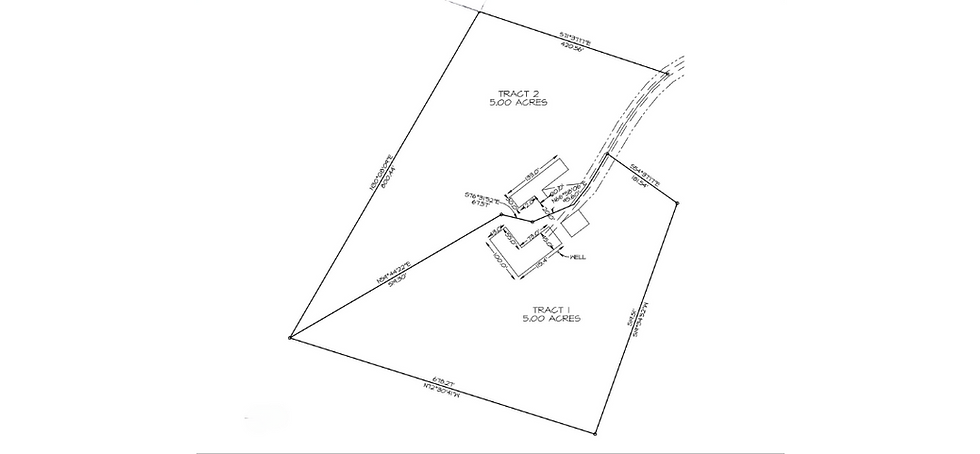Do I really need an architect though?
- Jack Baldwin
- Mar 13
- 3 min read
Author: Jack Baldwin
Designing and building your dream home is an exciting journey but can feel overwhelming without the proper guidance.
But do you really need an architect to get you to the finish line? (Spoiler alert: the answer might be "No"!)
So when do you need an architect, and when does it make sense to do the work of finding the "right" architect bring to the table when taking on a custom home project?
In my interview with James Knight ( you can watch the whole conversation here:
We talked about the role an architect plays in home design and why you may (or may not) want one on your project.
"When a client comes to us, they're not just looking for a set of plans—they're looking for guidance," says James. "(they need) someone to bring their vision to life while navigating all the technicalities of custom home design. We take that raw inspiration and turn it into something tangible that can be built, lived in, and cherished for generations.
"There's so much more to designing a home than what meets the eye. It's not just about aesthetics; it's about ensuring the design works with the land, adheres to local regulations, and is structurally sound. Without an architect, you risk missing critical elements that can lead to expensive changes down the line."
The Four Phases of Our Design Process
James' approach when taking on new architectural design projects has been to start by breaking it down into four significant phases that cover the concept, design, permitting, and build process, each designed to guide you through the journey of turning your dream home into a reality:
Phase 1: Conceptual & Schematic Design
This is where every project begins. We gather all the essential information to translate your vision into initial concepts. Here's what this phase includes:
Collecting client ideas and inspirations (photos, sketches, mood boards, etc.)
Reviewing site details (measurements, topography, existing structures)
Incorporating pre-existing materials (contractor selections, surveys, etc.)
Conducting walkthroughs and consultations (in person, virtual, or both)
"This phase is really about listening and understanding," James explains. " We want to grasp what excites and inspires our clients and their priorities. It's a collaborative process, and we're here to guide you every step of the way."
Phase 2: Design Development
Once the basic concept is in place, we move into design development. During this phase, we:
Refine floor plans and layouts
Explore various design possibilities
Provide professional insights and suggestions
Balance aesthetics with functionality and budget constraints
"This is where the design starts to take shape." James continues, "Our clients love seeing their ideas evolve into something real and tangible. We also ensure the design aligns with practical considerations, like budget and functionality."
Phase 3: Detailed Design & Specifications
In this phase, we dive into the details, creating comprehensive plans and specifications to guide the construction process. Key deliverables include:
Finalized floor plans
Site surveys and placement details
Structural specifications (roofing, foundation, framing)
Material selections (cabinetry, exteriors, roofing types, etc.)
"The details matter. This phase ensures that there are no surprises when the project moves to construction. Everything is accounted for, from the structural elements to the finishing touches." - James Knight.

Phase 4: Coordination & Permitting
The final phase focuses on ensuring everything is ready for construction. Here's what we handle:
Collaborating with contractors, engineers, and interior designers
Acquiring all necessary permits
Finalizing deliverables required by city or county authorities
"We believe in early contractor involvement. It's about creating a cohesive team where everyone is on the same page. This approach minimizes surprises and ensures a smoother construction process." - James Knight.
The Architect's Role Beyond Design
At Reynard Custom Homes, we see our role as more than creating beautiful designs. We're your partners in navigating the complexities of budgeting, permitting, and construction logistics.
"Being an architect isn't just about creative design," says James. "It's really about problem-solving. We continue to learn to anticipate challenges before they arise, whether ensuring compliance with local regulations or collaborating with structural engineers to address framing and foundation requirements. We aim to make the process seamless for our clients."
Hiring an architect is more than just having a set of drawings—it's about ensuring your vision is achievable, optimized, and ready for construction. "Your home should reflect your style, needs, and dreams."
.png)








Comments